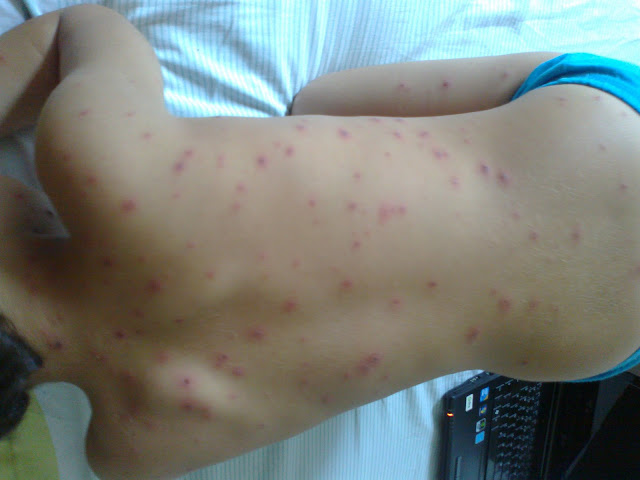What is Catapora?
Synonyms: varicela
Catapora is one of the most common childhood diseases. Caused by viruses, it can be highly contagious to those who have never been affected by it before or for those who have not received the vaccine.
Catapora is characterized primarily by the appearance of red blisters on the skin, scattered throughout the body, which cause itching and other symptoms.
Causes
Catapora is caused by the varicella-zoster virus, a member of the herpes virus family, which is also responsible for shingles (shingles) known as shingles in adults.
Catapora is easily transmitted to other people. Contagion occurs through contact with the bubble fluid or through coughing or sneezing. Even those who are infected and do not have the symptoms of the disease can transmit it.
When someone is infected, the chicken pox takes 10 to 21 days to manifest. People can transmit the virus from a day or two before the disease erupts in the body. They remain contagious while the crusty blisters are present.
Risk factors
Children are more likely to have chicken pox, especially before age 10. The disease is usually mild, although serious complications may occur in some cases. Usually, adults and older children become more seriously ill than younger children.
The children of mothers who had chickenpox or children who received the vaccine are less predisposed to get the disease before the first year of life.
If the disease occurs in the first year of life, it is usually mild. This is due to the antibodies present in the mother's blood that protect the babies. Children less than 1 year old whose mothers did not have chicken pox or were vaccinated may have a more severe version of the disease.
Being exposed to the virus through contagion with infected people is the main risk factor for chickenpox, especially if the person has never contracted the disease and never been vaccinated.
Once you have had chickenpox, the disease will have little chance of recurring in your body. The same happens in the case of the vaccine: once vaccinated, very little chance of contracting the disease.
Symptoms of Catapora
Catapora infection usually lasts five to 10 days. The first symptoms of the disease usually appear one to two days before the characteristic eruptions of chicken pox. They remain for about four to five days before they disappear completely. Check out the main symptoms of the disease:
Fever
The appearance of reddish blisters on the skin spread all over the body (the number of eruptions varies from 250 to 500)
Itchiness
Malaise
Loss of appetite
Headache
Bellyache.
The blisters appear initially on the face, trunk, or scalp and proliferate from there. In general, the appearance of small blisters on the scalp confirms the diagnosis.
A day or two later, the blisters turn gray and they see crusts. Meanwhile, a new wave of popcorn bubbles in groups. Chickenpox often appears in the mouth, vagina, and eyelids.
The most serious symptoms of chicken pox are more common in children with a problem immune system. This can be a result of illness or medications such as chemotherapy and steroids. Children with skin problems, such as atopic dermatitis, may have more than 1,500 blisters.

At the medical appointment
Streamline the consultation and describe all the symptoms your child has seen to the doctor. Get rid of chickenpox and orient yourself on the best way to treat it.
If you are an adult who has never developed chicken pox in childhood, it is wise to ask the doctor about the chances of you getting the disease in adulthood.
The specialist should ask you some questions. Get familiar with examples and be prepared to answer them:
Has your child been in contact with another child who is or has had chicken pox?
Has your child ever had chicken pox before?
Does your child take any specific medications or undergo any treatment?
Diagnosis of Catapora
The diagnosis of chickenpox is usually made only by physical examination. A simple analysis of the medical history and observation of the symptoms, especially if there are occurrences of eruptions in the skin, it is enough for the doctor to correctly make the diagnosis.
If in doubt, blood tests and tests involving the collection of skin or secretion may be performed on the blisters themselves.
Treatment of Catapora
Most of the time, keeping the child comfortable while the body fights the disease alone is enough. Avoid taking your child to school or daycare because the disease is highly contagious and other children may become infected.
Safe antiviral drugs have already been developed. For the best possible efficacy, they should be given within 24 hours after the onset of the rash.
In some cases, chicken pox does not require treatment, as it may disappear on its own. In these cases, the doctor may only describe medications to relieve itching.
Nenhum comentário:
Postar um comentário